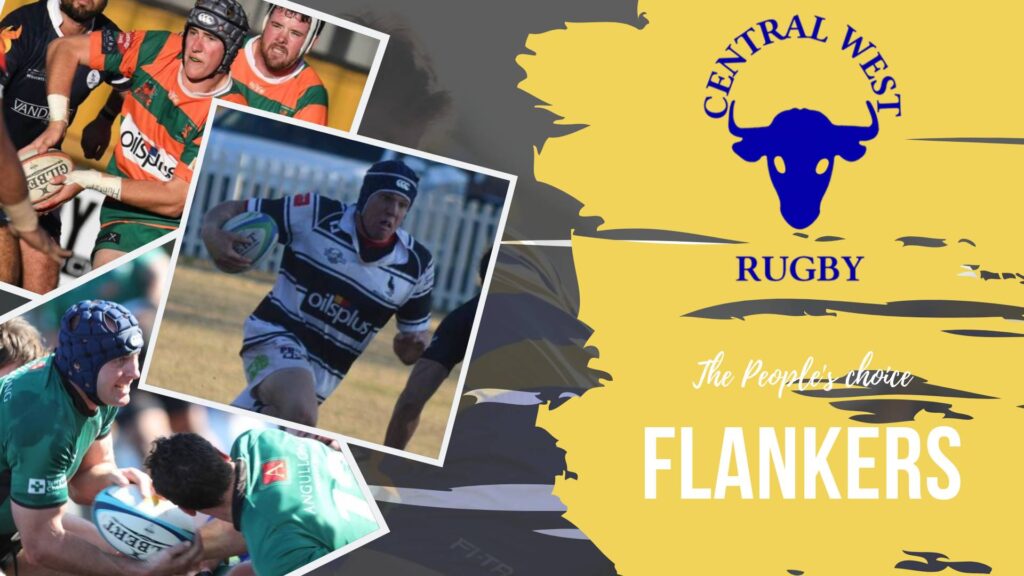A rugby union team’s initial fifteen players include two flankers. They are designated as the “blindside” and “openside” flankers and don the six or seven shirts.
How to be a flanker in rugby, the function of a flanker in rugby as well as the distinctions between the two varieties are discussed in this article.
How to be a Flanker in Rugby
The best way on how to be a flanker in rugby is learn all about the techniques of this position consists of blindside and openside. And in the following, we will talk to you the role of a flanker and distinguish between them.
In the scrum, where are the Flankers?
The six and seven jerseys in scrum formation are highlighted in this photo. They make up the third row from the rear.
On either side of the number eight is the flanker. In other words, they define the scrum’s flanks.
The bigger expanse of open field to the right of this scrum would be seen if I provided a panoramic view of the pitch. Nearer to the left is the touchline.
The side of the scrum with the most room to attack or defend is where the openside flanker settles in.
The flanker on the blind side is on the smaller side.
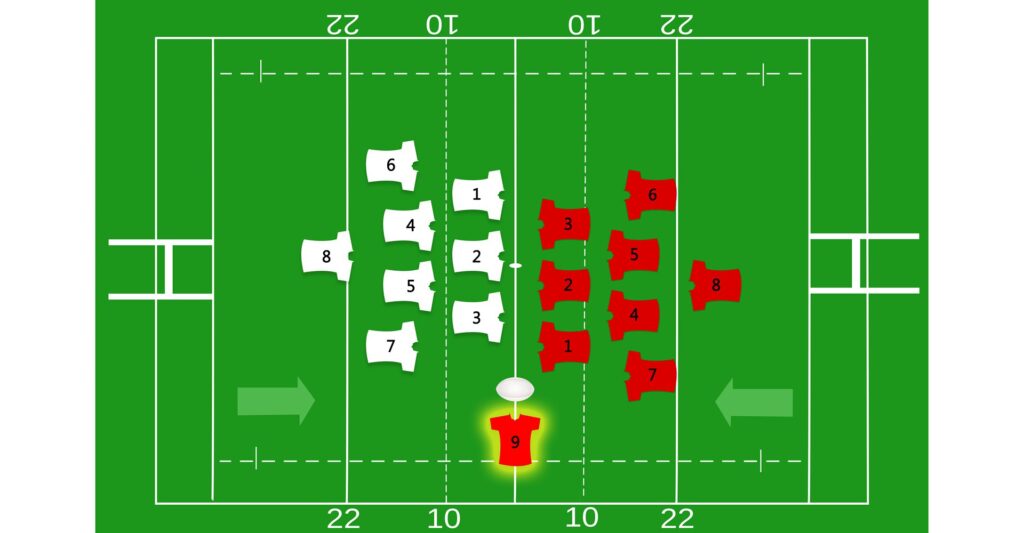
What Function Do Flankers Serve in a Rugby Team?
The team’s fastest forwards are usually the flankers. Their specialized responsibilities in offense and defense account for this.
When one of their teammates is tackled, they guard the ball to prevent the opposition from gaining control.
They maintain attacking play and offer assistance to receive passes or participate in rucks. (If you have questions regarding the breakdown, see our article for beginners on rucking in rugby.)
At opposition rucks, the flankers of the defending team fight for the ball and attempt to rob the opponent of possession.
The most tackles are made by flankers during a game as a result of their crucial defensive role.
The remainder of the article examines the various duties and functions of flankers in further detail. We’ll also go over how the blindside and openside postures differ from one another.
Flankers attacking and defending the breakdown
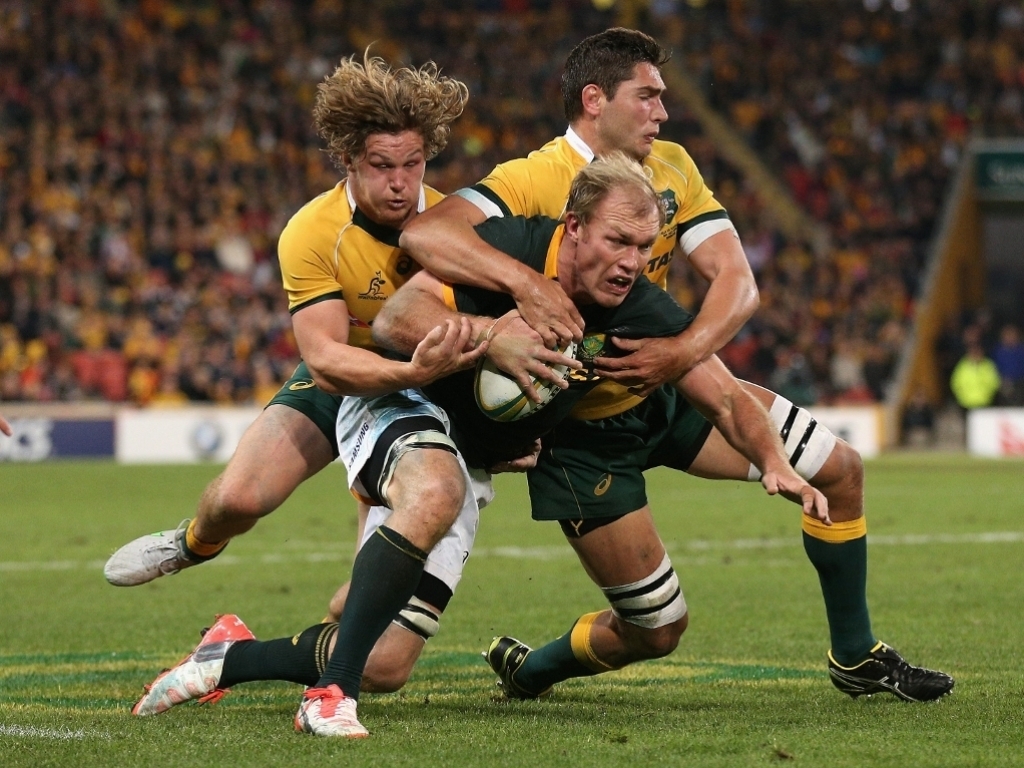
When the ball carrier is tackled to the ground, the play is said to “breakdown.” The rugby rules permit a fight for the ball once the tackled player releases the ball on the ground.
The flankers’ job is to follow the action and get to breakdowns quickly.
One or both flankers may not be seen rushing to a breakdown. The second flanker might guess that the ball will travel wide once more and run to a wider position as a result.
However, the two flankers on defense frequently hunt in pairs. While the other waits a few beats before moving into position to compete for the ball, the first will tackle the ball carrier.
Jackling is the name for this. The jackler and tackler are denoted in the image below. The green player that is squatting down is a flanker attempting to keep possession.
Guarding the breakdown are attacking Flankers.
When a teammate is tackled, the flanker on the attacking team is responsible for keeping the ball safe.
To create a ruck, they will crouch over the ball. The opposing players will try to push them aside, therefore the flanker needs to be strong to maintain their place.
Defense Flankers engage in breakdown assault.
To try to stop the opposing side’s play, the flanker on the defensive team will “attack” the breakdown.
If they can slow down the opposition’s play and make more attacking players join the ruck to protect the ball, that is a successful outcome.
The best result occurs when the defensive flanker can maintain their balance while grabbing the ball.
Jackalling is when they successfully “take” the ball for their own team.
The defensive side will receive a penalty if the ball carrier continues to hold the ball to prevent the turnover.
The flanker has successfully preserved possession for their own team in both cases. This may mean the difference between a game being won or lost.
What skillsets are required of a Flanker for breakdown work?
As they follow the play, flankers must be quick and cover territory rapidly. As a result, their bulk is typically a little less than that of prop forwards and locks.
However, in order to compete and jackal effectively at the ruck, they need strong upper bodies.
Additionally, flankers frequently stand shorter than other players in the pack. Again, this is due to the fact that when jackaling, they must crouch low to the ground.
Later on, we’ll find that flankers frequently make the most tackles during a game. Because they are shorter than a conventional lock, flankers can tackle low and knock larger opponents to the ground.
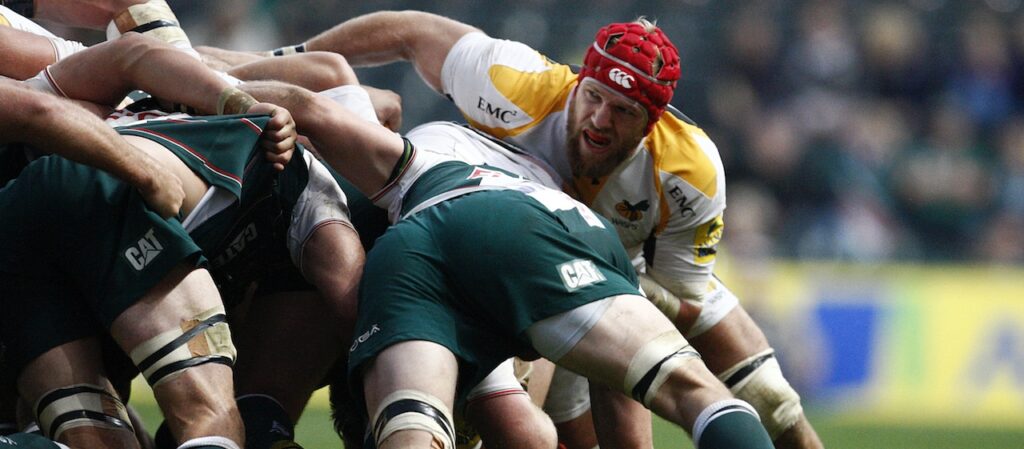
How Do Flankers Act During an Attack?
In comparison to the early years of Rugby Union, the flanker’s function has significantly changed.
In the past, the flanker’s job was to push in the scrum and battle in rucks. Wavell Wakenfield, an English player, significantly altered the role.
Unless you’re a fan of the Harlequins, you might not have heard of him. On our choice of the top five English flankers of all time, though, we placed him at number two. He is to blame for the modern attack strategy that uses flankers.
Good flankers can offer “link play” or “continuity,” according to observers.
When the flanker is aiding the wider players in an offensive move, this occurs.
What Is The Difference Between Blindside And Openside Flankers?
The majority of the players on the back row are able to work at six, seven, or eight.
Specialized blindsides and opensides are a relatively new development in the sport.
In the past, regardless of where the scrum was on the field, flankers preferred to pack down on the left or right of the scrum. Alternatively put
The responsibilities now differ more clearly, though. This is mostly because the openside flanker must go through the field more quickly to keep up with the current fast-paced game.
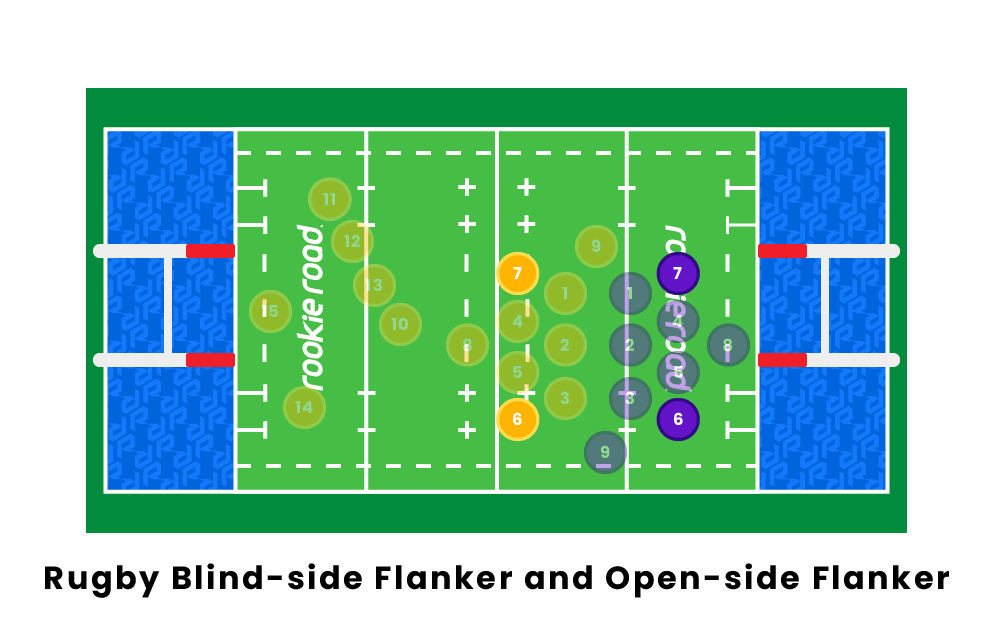
Differentiating the openside flanker
In general, the openside moves more quickly than the blindside. To change positions on defense, they must quickly get up after being tackled. They consequently have a tendency to be more agile.
They often carry less weight than the blindside due to their speed and agility. They are therefore lighter and move more quickly.
Differentiating the blindside flanker
Grunt and ballast must be supplied by a forward pack. The blindside must compensate if the pack has a weaker flanker.
Generally speaking, blindsides are larger and heavier than loosies. They must use their bulk effectively because of this as well.
Blindsides enjoy making strong tackles and heavy hits.
In an assault, they can also serve as battering hammers. The objective is that it takes two or more defenders to stop them even if they don’t get through. The attacking team now has more players at its disposal.
Conclusion
We’ve put together some background and descriptions of how to be a flanker in rugby, the function of a flanker as well as the distinctions between the two varieties are discussed in this above article.
Please read: http://rugbyqa.com/are-deadlifts-good-for-rugby-benefits-and-drawbacks/

